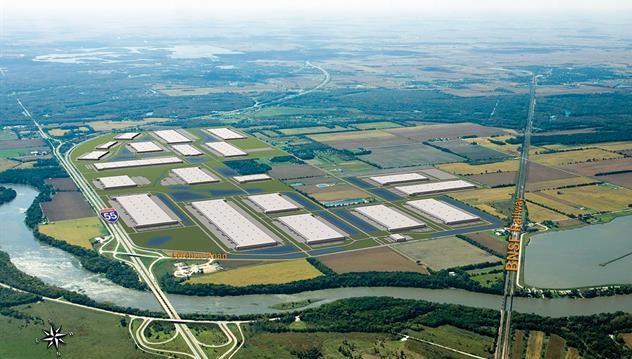
CHICAGO—The North American big-box sector just finished another historic year, largely due to a healthy US economy that continued to expand, and the seemingly unstoppable rise of e-commerce, which now accounts for 10% of non-auto retail sales.
Overall net absorption hit an all-time high of 116 million square feet in 2017, 2.4% higher than the previous year, according to Colliers International's latest Big Box Market Report, a series of studies that track the sector, comprised of distribution buildings with more than 200,000 square feet and clear heights of 28' or greater. Record amounts of absorption kept the overall vacancy rate at an all-time low of 6.9% despite developers creating 128 million square feet of new space, a new record for the sector.
“I don't see this slowing down in the near future,” Pete Quinn, Colliers' national director of industrial services, tells GlobeSt.com. “A lot of retailers are just getting into e-commerce,” and most will need modern distribution centers that have the scale and technology to properly handle the delivery of individual purchases direct to consumers.
Stupendous expansion driven by robust demand has become the normal state of affairs in the big-box sector. And although certain metros such as Los Angeles, Chicago, Indianapolis and New Jersey, among others, have benefitted most due to their key role in the global supply chain, this growth is consumer-driven, and that means big-box buildings are needed essentially everywhere.
But there have been a few subtle changes in the sector, Quinn says. Until recently, developers concentrated their efforts in areas that could ensure low transportation costs. “Now it's based predominantly on labor availability. We're just running out of labor.”
The sinking unemployment rate has something to do with that, but some also point the finger at Amazon. “They're eating up much of the space and absorbing much of the labor force,” Quinn says. Some of Colliers' clients even request that they don't want their new big box facility near an Amazon distribution center. Still, others feel a location near Amazon provides benefits. The company can frequently convince municipalities to build out infrastructure, such as new access roads, that can help other nearby distributors bring in needed labor.
Amazon continues to dominate new development activity. By 2017, it had 258 facilities of all types with a combined total of 102 million square feet. And it plans to develop another 37 million square feet by the end of 2018, Quinn says.
And within the big-box sector, it “leased 10 buildings totaling just under eight million square feet in the 14 markets highlighted in this report in 2018,” Colliers notes. “Continued demand from Amazon along with other retailers, wholesalers and third-party logistics companies will keep development high in 2018 as a record 120 million square feet is currently under construction.”
Not surprisingly, this perfect storm of activity has investors buzzing around new big-box buildings even before developers can put on the finishing touches. Cap rates dropped to a record-low 5.8% in 2017, with many core markets posting cap rates at or near 5%. Big-box properties have rapidly become one of the most-favored investments in commercial real estate, Quinn says, “even for those that were not industrial buyers. That's something we anticipate will continue.”
Want to continue reading?
Become a Free ALM Digital Reader.
Once you are an ALM Digital Member, you’ll receive:
- Breaking commercial real estate news and analysis, on-site and via our newsletters and custom alerts
- Educational webcasts, white papers, and ebooks from industry thought leaders
- Critical coverage of the property casualty insurance and financial advisory markets on our other ALM sites, PropertyCasualty360 and ThinkAdvisor
Already have an account? Sign In Now
*May exclude premium content© 2025 ALM Global, LLC, All Rights Reserved. Request academic re-use from www.copyright.com. All other uses, submit a request to [email protected]. For more information visit Asset & Logo Licensing.







